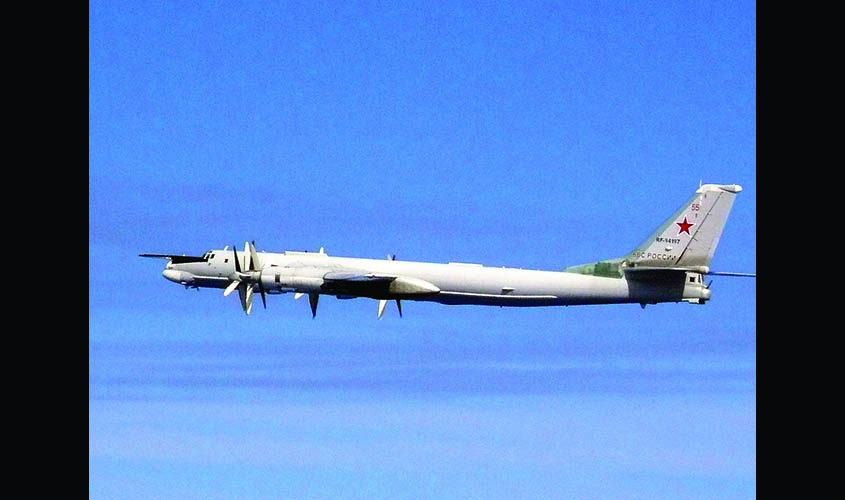He is unwilling to suspend quest to ‘recover sovereignty’ over the South China Sea.
China has been under considerable pressure for more than 18 months. Chinese President Xi Jinping and the Chinese Communist Party (CCP) have been trying to reach some kind of agreement to defuse the ongoing US-China tariff war. Washington has, meanwhile, been trying to create an adverse international environment for China including a push-back on the Belt and Road Initiative (BRI) and efforts by China’s fast-growing telecommunications and technology company Huawei to install 5G in Europe and other countries. China’s official media has blamed hostile foreign forces as responsible for the recent troubles in Hong Kong.
Domestically too, the cost of living is rising and China’s economy continues to slow down, contributing to increased unemployment and worker protests, the incidence of which has doubled over the last year. There is dissatisfaction among academics and students who, since the National People’s Congress (NPC) session in March 2019, have, at personal risk, publicly criticised Xi Jinping’s policies. Quite unusually, a couple of members of the Chinese People’s Political Consultative Conference (CPPCC), a few “princelings” and some former senior Party cadres, have also publicly voiced their criticism suggesting differences in the upper echelons of the Party leadership.
Despite this Xi Jinping has not modified his increasingly stringent domestic policies or assertive and, at times aggressive, foreign policy. The South China Sea, of which China claims over 3 million square kilometeres, remains at the centre of China’s efforts. China continues to aggressively militarise islands and islets in the South China Sea to establish its claim notwithstanding Xi Jinping’s commitment in 2015 not to militarise these features.
Qiu Shi (16 April), the Party’s leading fortnightly theoretical journal, published an article authored jointly by the People’s Liberation Army Navy (PLAN) Commander Vice Admiral Liu Shijong and the PLAN Political Commissar Vice Admiral Qin Shengxiang. It revealed that President Xi Jinping has been promoting the construction projects on certain islands and reefs in the South China Sea “with a firm will”, which has “changed the strategic situation of military struggle at sea and demonstrated the steadfast determination to fight for every inch of territorial land and waters within China’s sovereignty”.
There are other recent instances of China’s assertive posture, which show that despite being under pressure China is unwilling to suspend its quest to “recover sovereignty” over the South China Sea. Reports confirm that the Chinese survey ship, Haiyang Dizhi 8, escorted by at least three ships including a 12,000-ton China Coast Guard cutter with a helicopter and another 2,200-ton Coast Guard ship, conducted seismic surveys of Vietnam’s exclusive economic zone for ten days from 12 July. Neither country has confirmed the stand-off, but in the last few days people on Vietnam’s social media have criticised Vietnamese leaders for being submissive to China.
Chinese aircraft and ships have similarly been violating Japanese air space and waters with China’s People’s Liberation Army Air Force (PLAAF) aircraft overflying the Miyako Strait and Bashi Channel. Recently on 23 July, two PLAAF Xian H-6K long-range bombers and two Russian Air Force Tupolev Tu-95MS strategic bombers for the first time ever together flew over the Dokdo Islet violating South Korea’s Air Defence Identification Zone (ADIZ). Interestingly, the Dokdo Islet, called Takeshima by Japan, is claimed by Russia.
China has at the same time steadily increased diplomatic, political and military pressure on Taiwan to accept the “1992 consensus”. PLAAF aircraft have circled Taiwan while PLAN warships including China’s aircraft carrier have sailed through the Taiwan Strait. Between 29 June and 3 July, China for the first time test-fired a series of DF-21 anti-ship, medium-range ballistic missiles into the South China Sea. Beijing seems to have assessed that it has adequate military capability to deter the US from coming to Taiwan’s aid.
Most recently, China’s Defence White Paper entitled “China’s National Defence in the New Era” and released in the midst of the US-China tension on 24 July 2019, included a candid assertion of future intent. It described itself as “the only major country yet to be completely reunified, and one of the countries with the most complex peripheral security environment”. The observation that China is “the only major country yet to be completely reunified” clearly hints at the “China Dream” and points to China’s long-term future plans and likely policy on settlement of outstanding border and territorial disputes. This is of direct relevance to India and intrusions by Chinese armed forces across the Line of Actual Control (LAC) need to be viewed as part of China’s ambition to “completely” reunify the country. This would apply as well to China’s other neighbours like Taiwan, Japan and Vietnam.
These actions show that Chinese President Xi Jinping and the CCP Central Committee are unwilling to compromise with Washington on issues they consider as affecting national interest. Xi Jinping has also apparently calculated that he can press ahead with the “reunification” of China, more so as Beijing perceives that some of the countries with whom it has territorial issues are close to the US.
Jayadeva Ranade is former Additional Secretary, Cabinet Secretariat, Government of India and is presently President of the Centre for China Analysis and Strategy.

